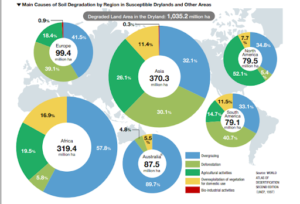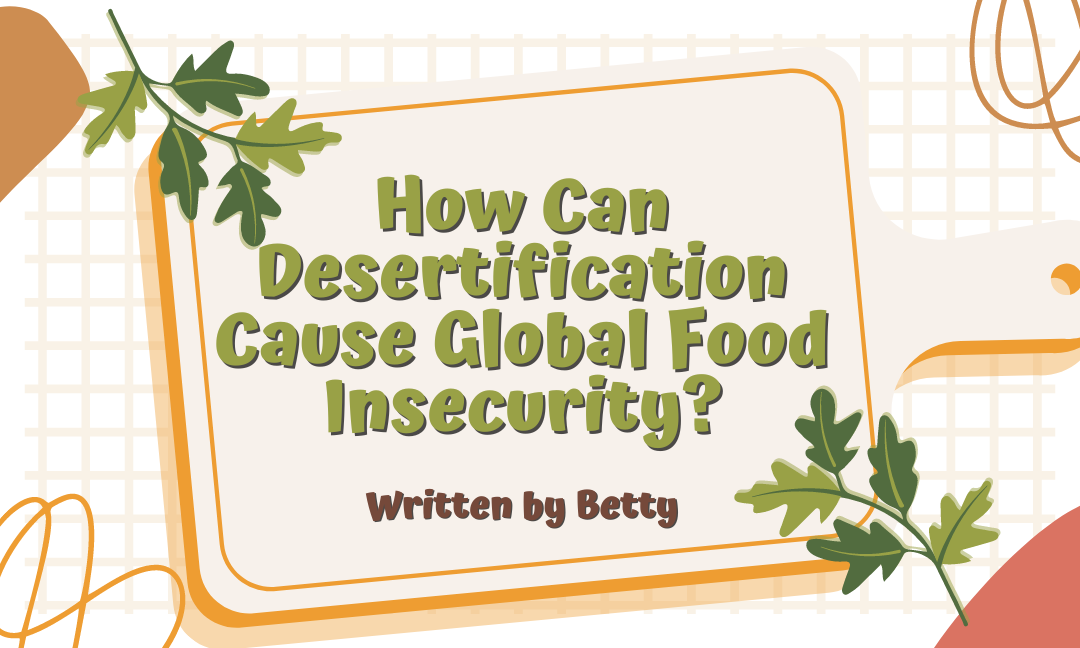Written by Betty
Edited by Kiritika Rana
Designed by Kiritika Rana
Published by Kiritika Rana
What are the causes of desertification?
Human activities and climatic variation are categorized into the two main causes of desertification. Human activities encompass overgrazing, the destruction of vegetation cover, farming, and deforestation. Climatic variation includes drought, squall, and heavy rain. Those activities depletes the nutrients in the lands, and imposes more development pressure on the 
lands while the population levels are growing. The vicious circle is: overgrazing and over farming are caused by poverty and food insecurity (especially in Africa), but the lands consistently become more barren as these activities are going on. As a result of that, the lands lose humidity and end up as land degradation and then desertification.
Land degradation, food and human health
 These environmental processes are threatening the world’s arable lands. With the lands degrading, and deserts expanding, food production is reduced, water resources dry up, diseases spread and population pressure.
These environmental processes are threatening the world’s arable lands. With the lands degrading, and deserts expanding, food production is reduced, water resources dry up, diseases spread and population pressure.
- Food production and water resources: The reduction of food provision is caused by the lack of water resources, which can be concluded into two reasons. The principal cause is the removal of vegetation. Overgrazing removes the shade that covers lands that stops water from evaporating. Deforestation reduces the area of forests, the temperature of land surface goes up, and additionally, there are less trees that can hold moisture in the air. Food becomes more unaffordable in the market as water becomes a rare resource. Another cause is population stress. After the 1900s, the global population skyrocketed, and doubled in a few decades. What was coming after the population explosion were industrialization and the expanding human activities. Farming and fracking have destroyed the patterns of the ecosystem.

- Diseases: Many communicable diseases are apt to dry and hot environments. Such as Malaria and parasites.

